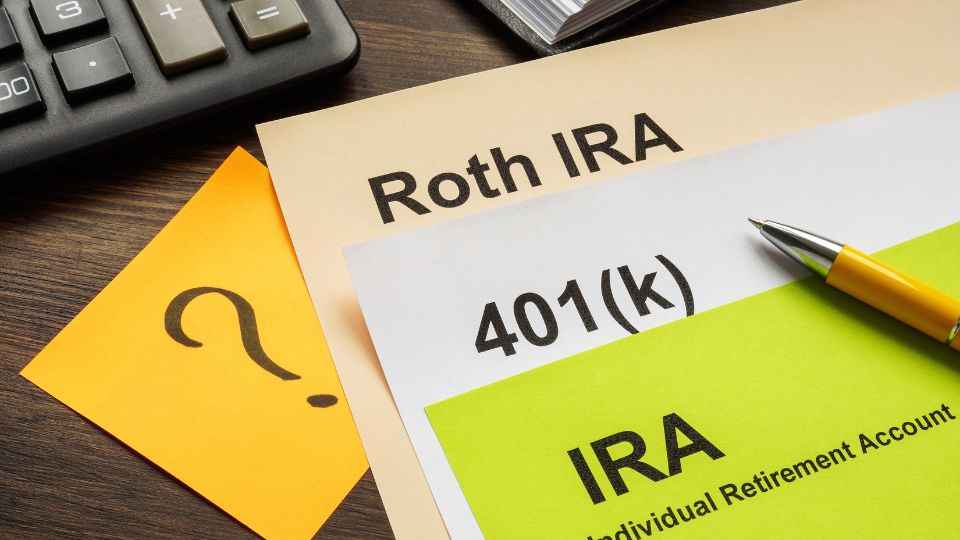Retirement planning is not just a matter of saving money; it’s about strategically securing your future. As life expectancies increase and the nature of retirement evolves, the need for comprehensive retirement planning becomes more crucial than ever. It’s about ensuring that the golden years of your life are comfortable, secure, and aligned with your personal aspirations. Whether you dream of traveling, pursuing hobbies, or simply enjoying a peaceful life, effective retirement planning is the key to making these dreams a reality.
This article is crafted to guide you through the multifaceted journey of building a secure financial future. We aim to provide you with the knowledge and tools necessary to navigate the complexities of retirement planning. From understanding the basic principles of retirement savings to exploring sophisticated investment strategies, we’ll cover a broad spectrum of topics. You’ll learn about managing debts, budgeting for future needs, and planning for healthcare expenses. Additionally, we’ll delve into the nuances of estate planning, ensuring that your legacy is preserved according to your wishes.
Understanding Retirement Needs and Goals
Understanding your retirement needs and goals is a crucial first step in planning for a secure financial future. This process begins with a clear assessment of what you envision for your retirement. Do you dream of extensive travel, pursuing expensive hobbies, or a simple, quiet lifestyle? Your goals will significantly influence the amount of money you need to save.
Calculating retirement costs involves estimating living expenses, healthcare costs, and any additional activities you plan to undertake. It’s essential to factor in inflation, as the cost of living will likely rise over the years. On the income side, consider all potential sources of retirement income: pensions, Social Security benefits, savings, investments, and any part-time work. Balancing your expected income against your estimated expenses will help you understand how much you need to save to meet your retirement goals comfortably. Remember, it’s better to overestimate costs and save more than to find yourself short in your later years.
The foundation of retirement planning is understanding and effectively utilizing retirement savings accounts. Two primary vehicles are 401(k)s and Individual Retirement Accounts (IRAs).
Understanding 401(k)s
401(k)s are employer-sponsored plans allowing employees to save a portion of their paycheck before taxes. Many employers offer a match to employee contributions, essentially free money adding to your retirement savings. Maximizing your contributions to meet at least the full match percentage is crucial.
401(k) plans are a cornerstone of retirement savings for many employees. Here’s a detailed breakdown:
- Pre-Tax Contributions: Money invested in a 401(k) is taken from your paycheck before taxes, reducing your taxable income for the year.
- Contribution Limits: There’s an annual limit on how much you can contribute. For 2023, it’s $20,500, with an additional $6,500 allowed as a catch-up contribution for those over 50.
- Employer Match: Many employers match contributions up to a certain percentage, effectively doubling some of your savings. Understanding your employer’s match policy is essential to fully leverage this benefit.
- Investment Options: 401(k)s typically offer a range of investment choices, from stocks and bonds to mutual funds. Selecting the right mix of investments is critical and often depends on your risk tolerance and time until retirement.
- Vesting: Some employer matches have a vesting schedule, meaning you only own a portion of the employer contributions until a set period has passed.
- Withdrawals: Withdrawing funds before age 59½ typically incur penalties. After 59½, withdrawals are taxed as ordinary income.
- Required Minimum Distributions (RMDs): You must start taking distributions from your 401(k) at age 72, based on IRS life expectancy tables and account balance.
Understanding these aspects of a 401(k) can greatly enhance your retirement savings strategy.
Understanding IRAs
IRAs, both Traditional and Roth, are personal retirement savings accounts. Traditional IRAs offer tax-deferred growth, meaning you pay taxes when you withdraw funds in retirement. Roth IRAs, on the other hand, are funded with after-tax dollars, but withdrawals are tax-free in retirement.
To maximize contributions, it’s important to budget effectively and start early, taking advantage of compound interest. For those over 50, catch-up contributions are an additional option, allowing for larger annual contributions.
Individual Retirement Accounts (IRAs) offer an excellent avenue for retirement savings, with unique features and benefits:

Traditional IRAs
- Tax-Deferred Growth: Contributions may be tax-deductible, reducing current taxable income.
- Taxes on Withdrawals: Taxes are paid on withdrawals during retirement.
- Contribution Limits: For 2023, the limit is $6,000, with an additional $1,000 for those aged 50+ as a catch-up contribution.
- Required Minimum Distributions (RMDs): Mandated withdrawals starting at age 72.
Roth IRAs
- After-Tax Contributions: Contributions are made with taxed income.
- Tax-Free Withdrawals: Distributions in retirement are tax-free, including earnings.
- Income Limits: Eligibility to contribute phases out at higher income levels.
- No RMDs: No required withdrawals during the owner’s lifetime.
Both accounts benefit from compound interest, making early and consistent contributions key. Catch-up contributions provide an opportunity for those nearing retirement to boost their savings. The choice between Traditional and Roth IRAs often depends on your current tax bracket and expected tax situation in retirement.
Tax Implications
Understanding the tax implications and benefits is vital. Contributions to 401(k)s and Traditional IRAs can reduce your taxable income in the year they are made, offering immediate tax benefits. Roth IRAs provide tax-free growth, beneficial for those who expect to be in a higher tax bracket in retirement.
Each of these accounts has specific rules, including contribution limits, withdrawal penalties, and required minimum distributions (RMDs). Navigating these rules is key to optimizing your retirement savings strategy and building a secure financial future.
Related: Boomer Housing’s Surging Wave: 9 Million Homes Incoming
Saving for Retirement
Saving for retirement is a critical financial goal that requires careful planning and discipline. Whether you’re just starting your career or nearing retirement age, it’s never too early or too late to begin saving for your golden years. In this section, we’ll provide tips on how to initiate retirement savings, emphasize the power of compounding, and offer strategies for catching up on retirement savings if you’re getting a late start.
Starting Retirement Savings Regardless of Age
- Begin Today: The most important step is to start saving right away. The sooner you begin, the more time your investments have to grow. Don’t procrastinate, thinking you have plenty of time.
- Set Clear Goals: Determine how much money you’ll need in retirement. Knowing your target amount will guide your savings efforts and help you stay on track.
- Create a Budget: Develop a budget that allocates a portion of your income to retirement savings. Treat your retirement contributions as non-negotiable expenses.
- Leverage Employer Plans: If your employer offers a 401(k) or similar retirement plan, take advantage of it. Contribute at least enough to get the full employer match, as this is essentially free money.
The Power of Compounding and Early Saving
Compounding is the magical effect that occurs when your investment earnings generate additional earnings over time. The earlier you start saving, the more compounding can work in your favor. For example, if you invest $1,000 per month from age 25 to 35 and then stop, you’ll likely have more in your retirement account by age 65 than if you start investing $1,000 per month from age 35 and continue until 65. Time is a valuable asset when it comes to compounding, so don’t underestimate its potential.
Strategies for Catching Up on Retirement Savings
If you find yourself behind on retirement savings, don’t despair. It’s still possible to make significant progress.
- Increase Contributions: Boost your retirement contributions as much as possible. If you’re over 50, you may be eligible for catch-up contributions in retirement accounts, which allow you to contribute more than the standard limit.
- Cut Non-Essential Expenses: Trim unnecessary spending from your budget to free up money for retirement savings. Identify areas where you can reduce costs without significantly impacting your quality of life.
- Delay Retirement: Consider working a few years longer than originally planned. This allows you to continue earning income and delay tapping into your retirement savings, giving your investments more time to grow.
- Seek Professional Advice: Consult a financial advisor to create a tailored plan for catching up on retirement savings. They can help you make informed investment decisions and optimize your strategy.
saving for retirement is a lifelong journey that requires diligence and commitment. Starting early, harnessing the power of compounding, and diligently contributing to retirement accounts are essential steps in securing your financial future. If you’re behind on your retirement savings, take proactive steps to catch up, and remember that it’s never too late to improve your financial outlook for retirement.
Retirement Income Sources
Ensuring a reliable stream of income during retirement is a fundamental aspect of financial planning. Retirees typically generate income from various sources, and understanding these sources is key to a secure retirement.
Generating Income from Savings
One of the primary sources of retirement income is the savings accumulated over a lifetime of work. This includes funds held in retirement accounts like 401(k)s, IRAs, and other investments. Retirees can withdraw from these accounts, either as lump sums or through systematic withdrawals, to cover their expenses. Careful planning is essential to make sure these savings last throughout retirement.
Social Security: A Deeper Dive
Social Security is a critical component of retirement income for many Americans. It is a federal program that provides monthly payments to eligible retirees based on their earnings history and the age at which they claim benefits.
For most, Social Security serves as a primary source of guaranteed income. Delaying claiming benefits until full retirement age or even beyond can result in higher monthly payments, enhancing financial security in retirement.

Social Security is a federal program that has been providing financial support to retirees, disabled individuals, and survivors for decades. Understanding how Social Security works and the various aspects of claiming benefits is essential for effective retirement planning.
1. Earnings History and Eligibility:
- Social Security benefits are calculated based on your lifetime earnings history. The program tracks your earnings throughout your working years, and your benefit amount is determined by your average indexed monthly earnings (AIME).
- To be eligible for Social Security retirement benefits, you typically need to have accumulated a minimum of 40 work credits, equivalent to roughly ten years of work. The exact number of credits required may vary based on your age at the time of application.
2. Full Retirement Age (FRA):
- Your full retirement age (FRA) is the age at which you can claim full Social Security benefits. It depends on your birth year and ranges from 65 to 67.
- Claiming benefits before reaching your FRA results in reduced monthly payments, while delaying benefits until after your FRA can lead to increased monthly payments.
3. Early vs. Delayed Claiming:
- You have the option to claim Social Security benefits as early as age 62, but doing so will result in reduced monthly payments. The reduction is based on the number of months before your FRA that you begin claiming.
- Delaying your benefits past your FRA can result in delayed retirement credits, which increase your monthly payments by a certain percentage for each year you delay, up to age 70.
4. Spousal and Survivor Benefits:
- Social Security offers additional benefits for spouses and survivors. Spousal benefits can provide a portion of your spouse’s earnings, while survivor benefits can be paid to a surviving spouse or eligible family members upon your passing.
- Understanding the rules and options for spousal and survivor benefits is crucial for married couples and families.
5. Tax Considerations:
- Social Security benefits may be subject to federal income tax, depending on your total income. Understanding the tax implications of Social Security can help with financial planning in retirement.
6. Cost-of-Living Adjustments (COLAs):
- Social Security benefits receive periodic cost-of-living adjustments to help them keep pace with inflation. Staying informed about these adjustments is essential for maintaining your purchasing power in retirement.
Navigating the complexities of Social Security can be challenging, and the optimal claiming strategy can vary based on your individual circumstances. Seeking advice from a financial advisor or using online tools provided by the Social Security Administration can help you make informed decisions about when and how to claim benefits. Social Security can be a valuable source of guaranteed income in retirement, and maximizing its benefits is a key element of a sound retirement plan.
Annuities and Other Options
In addition to personal savings and Social Security, retirees can explore various financial instruments to generate retirement income.
- Annuities: Annuities are insurance products that offer a guaranteed income stream for a specified period or for life. They can be particularly attractive for retirees seeking consistent income. Immediate annuities start payments soon after purchase, while deferred annuities allow for a delayed payout, potentially increasing future payments.
- Pensions: Some retirees are fortunate to receive pensions from their employers. Pensions provide regular payments, often based on salary and years of service, and can serve as a stable income source.
- Investment Income: Income generated from investments like dividend-paying stocks, bonds, or rental properties can contribute to retirement income. Diversifying investments can help mitigate risk and ensure a steady cash flow.
- Part-Time Work: Many retirees choose to work part-time during retirement to supplement their income. Part-time work can provide financial security and help retirees stay engaged.
- Reverse Mortgages: In certain situations, a reverse mortgage can be considered. It allows homeowners to convert home equity into cash without selling the property. However, this option should be carefully evaluated, as it comes with specific terms and considerations.
retirees generate income from a combination of sources, including personal savings, Social Security, annuities, pensions, investment income, part-time work, and even reverse mortgages.
A well-planned retirement strategy often involves a mix of these income sources to provide financial stability throughout retirement. It’s essential for retirees to carefully evaluate their options and create a retirement income plan that aligns with their financial goals and needs.
Related: Boost Savings with New Retirement Plans for Student Loans
Estate Planning for Retirees: Securing Your Legacy
Estate planning is a crucial component of retirement preparation that often gets overlooked or delayed. Yet, it plays a pivotal role in ensuring that retirees can enjoy their golden years with peace of mind, knowing that their assets and wishes are protected. In this comprehensive guide, we will explore estate planning for retirees, emphasizing the importance of this process, the key components involved, and essential considerations to help secure your legacy.
Why Estate Planning Matters in Retirement
Estate planning is not just for the wealthy; it’s a vital financial strategy for individuals at all income levels. In retirement, it takes on added significance because it involves preserving and transferring assets efficiently while minimizing potential tax burdens and ensuring your wishes are carried out.
One primary reason estate planning is crucial for retirees is the desire to provide for loved ones. Many retirees want to leave a financial legacy to their children, grandchildren, or charitable organizations. Proper estate planning allows you to do so while avoiding unnecessary complications and costs.
Additionally, estate planning addresses critical end-of-life decisions, such as healthcare preferences, ensuring that you receive the medical care you desire in the event of incapacitation. It can also prevent disputes among family members and ensure that your assets are distributed according to your wishes.

Key Components of Estate Planning
- Will: A will is a foundational document that outlines how your assets should be distributed after your passing. It allows you to designate beneficiaries, name an executor to manage your estate and specify guardians for minor children if necessary.
- Trusts: Trusts are versatile tools that can help retirees protect assets, minimize estate taxes, and control the distribution of their wealth. Common types of trusts include revocable living trusts, irrevocable trusts, and special needs trusts.
- Advance Healthcare Directives: These documents, including a healthcare power of attorney and living will, allow you to make healthcare decisions in advance, designating someone to make medical choices on your behalf if you become incapacitated.
- Financial Power of Attorney: A financial power of attorney designates someone to manage your financial affairs if you are unable to do so yourself. This can be invaluable in ensuring that bills are paid, investments are managed, and other financial matters are attended to in your absence.
- Beneficiary Designations: Many assets, such as retirement accounts, life insurance policies, and bank accounts, allow you to designate beneficiaries. Ensuring that these designations are up to date is a critical aspect of estate planning.
- Estate Tax Planning: Depending on the size of your estate, you may need to engage in estate tax planning to minimize potential tax liabilities. Strategies may include gifting, establishing trusts, and taking advantage of tax exemptions.
Essential Considerations for Retirees
- Review and Update Regularly: Life circumstances change, and so should your estate plan. Major life events, such as marriage, divorce, births, and deaths, can necessitate updates to your plan.
- Long-Term Care Planning: Retirees should consider how long-term care needs, such as nursing home expenses, will be covered. Long-term care insurance or Medicaid planning may be essential components of your estate plan.
- Digital Assets: In the digital age, it’s essential to include provisions for digital assets, such as online accounts, passwords, and digital property, in your estate plan.
- Charitable Giving: If philanthropy is important to you, consider incorporating charitable giving strategies into your estate plan, such as creating a charitable foundation or leaving assets to charitable organizations.
- Family Discussions: Open communication with family members about your estate plan can help prevent conflicts and ensure that everyone understands your intentions.
Estate planning is a vital element of retirement preparedness that should not be overlooked. It provides retirees with the peace of mind that their assets are protected, their loved ones are cared for, and their wishes are respected.
By understanding the key components of estate planning and considering essential considerations, retirees can secure their legacy and enjoy their retirement years with confidence.
Challenges and Pitfalls
Retirement comes with its share of challenges and potential pitfalls that retirees must navigate to ensure a financially secure and comfortable life. In this section, we will explore some common challenges faced by retirees, including inflation and market volatility, highlight the pitfall of not planning for healthcare costs, and offer advice on how to mitigate these challenges.
Common Challenges:
- Inflation: One of the most significant challenges retirees face is the impact of inflation. Over time, the purchasing power of money diminishes, meaning that the same amount of money buys less as prices rise. Retirees must ensure that their income and savings can keep pace with inflation to maintain their standard of living.
- Market Volatility: Market fluctuations can be nerve-wracking for retirees who rely on investments for income. Sudden market downturns can erode savings and disrupt retirement plans, especially if withdrawals occur during market downturns.
Potential Pitfalls:
- Unplanned Healthcare Costs: Healthcare expenses tend to rise with age, making healthcare one of the most significant retirement expenses. Failing to plan for these costs can quickly deplete retirement savings. Medicare covers some expenses but not all, and long-term care costs can be substantial.
Advice on Mitigating Challenges:
- Inflation Protection: Invest in assets that have historically outpaced inflation, such as stocks and real estate. Consider inflation-adjusted annuities or Treasury Inflation-Protected Securities (TIPS) to protect purchasing power.
- Diversify Investments: Diversification can help reduce the impact of market volatility. A balanced portfolio of stocks, bonds, and other assets can provide stability and income, even during market downturns.
- Emergency Fund: Maintain an emergency fund to cover unexpected expenses. This can prevent the need to dip into retirement savings prematurely.
- Healthcare Planning: Plan for healthcare costs by researching Medicare coverage and considering supplemental insurance policies. Long-term care insurance can also be a wise investment to protect against expensive nursing home or home care expenses.
- Budget Wisely: Create a detailed budget that accounts for essential and discretionary expenses. This can help retirees live within their means and avoid overspending.
- Continued Income: Explore part-time work or consulting opportunities during retirement to supplement income. Many retirees find fulfilling and flexible work options that help ease financial strain.
- Regular Financial Checkups: Periodically review your retirement plan to ensure it aligns with your financial goals and changing circumstances. Adjustments may be necessary as you progress through retirement.
In summary, retirees face challenges such as inflation and market volatility, along with potential pitfalls like unanticipated healthcare costs. Mitigating these challenges involves careful financial planning, diversification of investments, and a proactive approach to managing expenses and healthcare.
With proper preparation and a well-structured retirement plan, retirees can increase their chances of enjoying a financially secure and fulfilling retirement.
Retirement Planning Tools and Resources
Retirement planning can be a complex and nuanced process, but fortunately, there are numerous tools and resources available to help individuals make informed decisions and secure their financial future.
Online Tools and Calculators:
- Retirement Calculators: Online retirement calculators, like those offered by financial institutions and reputable websites, allow individuals to input their financial details and retirement goals to estimate how much they need to save and invest to meet their objectives.
- Budgeting Apps: Budgeting apps and software can help retirees track expenses and income, providing a clear picture of their financial health. Tools like Mint, YNAB (You Need A Budget), and Personal Capital are popular choices.
- Investment Platforms: Online brokerage platforms and robo-advisors offer user-friendly interfaces to manage investments and monitor portfolio performance. Examples include Vanguard, Fidelity, and Betterment.
Financial Advisors:
- Certified Financial Planners (CFP): Certified Financial Planners are trained professionals who can provide personalized retirement planning advice. They assess an individual’s financial situation, risk tolerance, and goals to develop a comprehensive retirement strategy.
- Registered Investment Advisors (RIA): RIAs are fiduciaries who are legally bound to act in the best interests of their clients. They can offer tailored investment guidance and financial planning services.
- Fee-Only Advisors: Fee-only advisors charge fees for their services rather than earning commissions from financial products, ensuring unbiased advice.
Staying Informed:
- Government Websites: Staying informed about changes in retirement laws and regulations is crucial. Websites like the U.S. Social Security Administration (ssa.gov) and the Internal Revenue Service (IRS) provide up-to-date information on retirement-related topics.
- Financial News Sources: Reliable financial news sources like CNBC, Bloomberg, and The Wall Street Journal offer coverage of retirement-related policy changes and financial market developments.
- Professional Associations: Joining professional organizations like the Financial Planning Association (FPA) or the National Association of Personal Financial Advisors (NAPFA) can provide access to resources, publications, and networking opportunities to stay informed about industry trends and regulatory updates.
- Financial Publications: Financial publications and journals can provide in-depth analysis of retirement planning strategies and regulatory changes. Examples include FinanceCrate, Forbes, Kiplinger’s, and Money Magazine.





